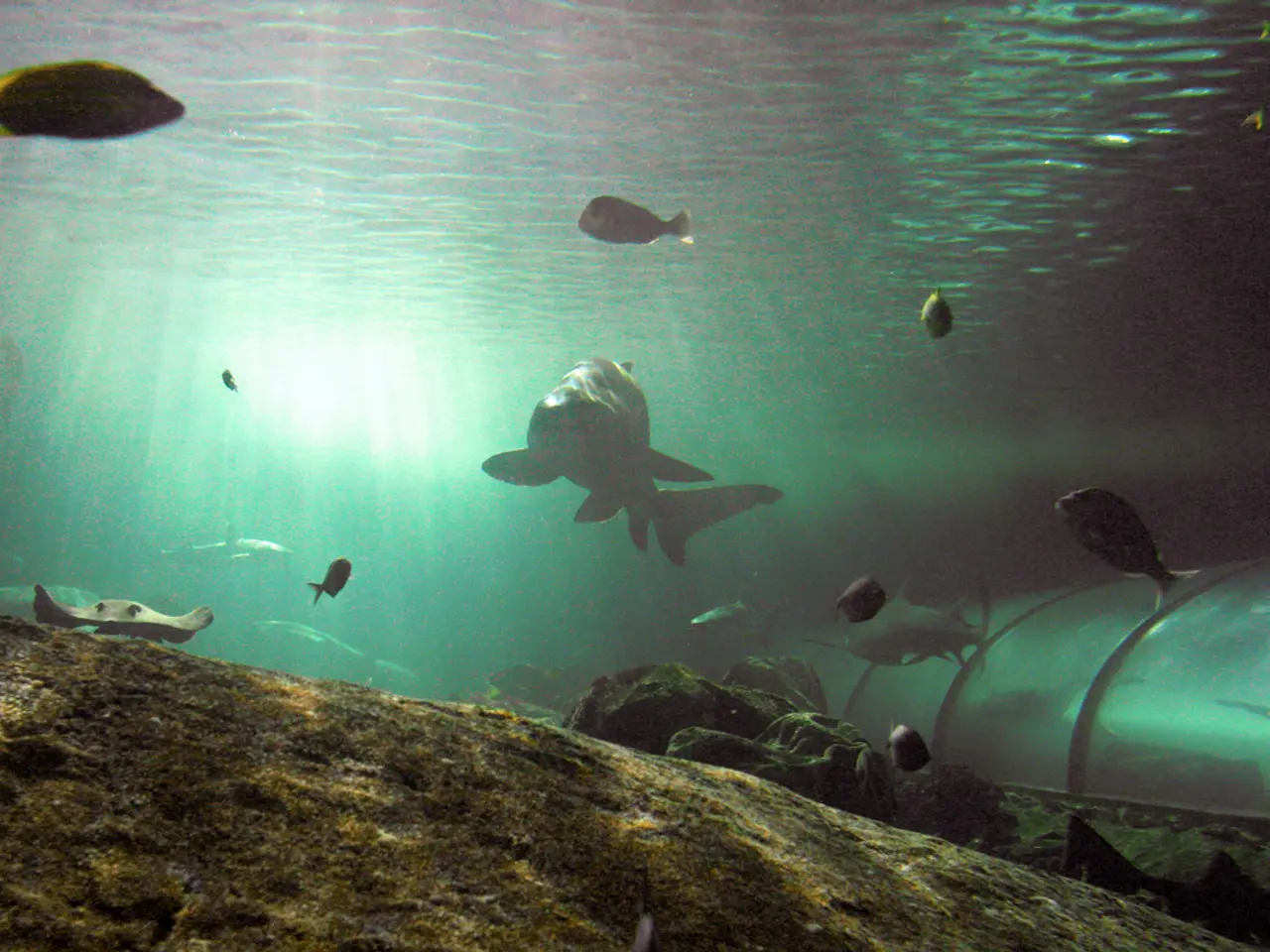Review of Canon EOS R10: A Compact and High-Performance Mirrorless Camera
The Canon EOS R10, while not inherently designed as a waterproof camera, offers several attractive features for those interested in underwater photography. This mirrorless camera boasts a compact design, making it easier to handle underwater compared to bulkier DSLR cameras.
One of the key strengths of the Canon EOS R10 is its high-speed shooting capability. It can capture up to 15 frames per second with a mechanical shutter and 23 frames per second with a silent electronic shutter, making it ideal for capturing fast-moving marine life.
Equipped with a 24.2 megapixel APS-C sensor, the Canon EOS R10 delivers detailed, high-resolution images suitable for creative underwater shots. An advanced autofocus system, Dual Pixel CMOS AF II with deep-learning subject detection, ensures sharp focus on marine life.
For video enthusiasts, the Canon EOS R10 offers 4K video recording options, including 4K/60p for smooth underwater video capture. Although it should be noted that 4K video recording at 60fps comes with a 64% crop, while uncropped 4K video can be recorded up to 30fps, oversampled from 6K, providing additional sharpness and detail.
However, the Canon EOS R10 lacks built-in weather sealing or waterproofing, meaning it cannot be used underwater without proper housing.
To use the Canon EOS R10 underwater, a dedicated underwater housing is required. Affordable waterproof housings and kits are available, including IPX8-rated housings compatible with the EOS R10 that allow underwater shooting down to approximately 33 feet (10 meters). These housings typically offer controls for the camera's shooting functions and can accommodate lens zoom and focus rings.
Some retailers offer kits including the EOS R10 with a standard lens (like the 18-150mm) along with a waterproof housing, strobe lights, and tray handles, providing a versatile setup for underwater photography without breaking the bank.
The Ikelite housing for the Canon EOS R10 features an excellent polycarbonate build quality with accessories options like a vacuum leak detection system, a TTL converter, and a magnified viewfinder. Every control is supported seamlessly.
While the Canon EOS R7, with more resolution at 32.5 megapixels, may be a better option for macro shooters or those who require higher resolution, the R10's 24 megapixels is considered the sweet spot when it comes to noise and image quality for an APS-C sensor.
The Canon EOS R10 is compatible with a range of macro lenses, including the Canon EF-S 60mm f/2.8 macro lens, Canon EF 100mm f/2.8 macro lens, and Canon RF 100mm f/2.8 macro lens. The Canon RF 100mm f/2.8 macro lens is considered by many to be the world's best macro lens.
The Canon R10 also provides manual white balance directly from the Q menu, a significant improvement for video shooters. It retains the dual pixel autofocus of the Canon R5 and improves upon it.
In conclusion, while the Canon EOS R10 is a high-performance camera with excellent imaging and autofocus capabilities beneficial for underwater photography, it must be paired with a dedicated underwater housing to be used underwater safely. Affordable waterproof housings and kits are available that make it accessible for enthusiasts and semi-professionals wanting to explore underwater shooting. This setup allows users to capitalize on the camera’s speed, image quality, and video capabilities underwater without risking damage to the camera body.
- The Canon EOS R10, despite not being waterproof, offers attractive features for underwater photography, with its compact design being easier to handle than bulkier DSLR cameras.
- The high-speed shooting capability of the Canon EOS R10 makes it ideal for capturing fast-moving marine life, capable of 15 frames per second with a mechanical shutter and 23 frames per second with an electronic one.
- With a 24.2 megapixel APS-C sensor, the Canon EOS R10 delivers detailed, high-resolution images suitable for creative underwater shots.
- An advanced autofocus system, Dual Pixel CMOS AF II with deep-learning subject detection, ensures sharp focus on marine life in underwater photography.
- For video enthusiasts, the Canon EOS R10 offers 4K video recording options, including 4K/60p for smooth underwater video capture, although with a 64% crop at 60fps.
- However, the Canon EOS R10 lacks built-in weather sealing or waterproofing and requires a dedicated underwater housing for use underwater.
- Affordable waterproof housings and kits are available for the Canon EOS R10, including IPX8-rated housings allowing underwater shooting down to around 33 feet (10 meters).
- These housings typically offer controls for the camera's shooting functions and can accommodate lens zoom and focus rings.
- Some retailers offer kits including the EOS R10 with a standard lens, waterproof housing, strobe lights, and tray handles, providing a versatile setup for underwater photography within budget.
- The Ikelite housing for the Canon EOS R10 features a high-quality polycarbonate build, accessories like a vacuum leak detection system, a TTL converter, and a magnified viewfinder, with every control supported seamlessly.
- While the Canon EOS R7, with more resolution at 32.5 megapixels, may be better for macro shooters or those requiring higher resolution, the R10's 24 megapixels is considered the sweet spot for noise and image quality for an APS-C sensor, and it provides manual white balance directly from the Q menu, improving video shooters' experience.




